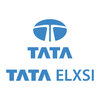
i
RMSI
Filter interviews by
RMSI Interview Questions and Answers
47 Interview questions
GIS integrates spatial data for mapping and analysis, enabling informed decision-making across various fields.
GIS stands for Geographic Information System, which captures, stores, analyzes, and manages spatial data.
It consists of hardware (computers), software (GIS applications), data (maps, satellite images), and people (GIS professionals).
GIS functionality includes mapping, spatial analysis, and data management,...
Content writing involves creating engaging, informative, and relevant text for various platforms to attract and retain an audience.
SEO Optimization: Content writers often incorporate keywords to improve search engine rankings, such as using 'best coffee shops' in a blog post.
Audience Understanding: Knowing the target audience helps tailor content, like writing a tech article for developers versus a general audienc...
GPS, or Global Positioning System, is a satellite-based navigation system that provides location and time information anywhere on Earth.
Satellite Constellation: GPS relies on a network of at least 24 satellites orbiting the Earth, providing global coverage.
Triangulation: GPS determines a user's location by calculating the distance from multiple satellites using the time it takes for signals to travel.
Applications:...
OOP (Object-Oriented Programming) is a programming paradigm based on objects and classes, promoting code reusability and organization.
Encapsulation: Bundling data and methods that operate on the data within one unit (e.g., a class).
Inheritance: Mechanism to create a new class using properties and methods of an existing class (e.g., a 'Dog' class inheriting from an 'Animal' class).
Polymorphism: Ability to present t...
GIS integrates spatial data for mapping and analysis, aiding decision-making across various fields.
Data Collection: Gather geographic data using GPS, remote sensing, and surveys.
Data Processing: Clean and organize data for analysis, using software like ArcGIS or QGIS.
Mapping: Create visual representations of data through maps, showing patterns and relationships.
Analysis: Perform spatial analysis to derive insights...
Identifying roads involves analyzing spatial data, using mapping tools, and applying various GIS techniques.
Utilize satellite imagery to visually identify road networks.
Employ GIS software like ArcGIS or QGIS to analyze vector data layers.
Use GPS data to track and map existing roads.
Incorporate OpenStreetMap data for comprehensive road coverage.
Analyze traffic patterns and connectivity to determine road importance...
Maps can be categorized into various types based on their purpose, content, and presentation style.
Topographic Maps: Show elevation and terrain features (e.g., USGS topographic maps).
Thematic Maps: Focus on specific themes like population density or climate (e.g., choropleth maps).
Political Maps: Display boundaries and locations of countries, states, and cities (e.g., world political map).
Physical Maps: Highlight ...
GIS mapping involves creating visual representations of spatial data to analyze and interpret geographic information.
GIS stands for Geographic Information System, which integrates hardware, software, and data for mapping and analysis.
GIS mapping allows users to visualize data in layers, such as population density overlaid on transportation networks.
Applications include urban planning, environmental monitoring, and...
Mapping is the process of creating visual representations of spatial data to analyze and interpret geographic information.
Types of maps include topographic, thematic, and navigational maps.
GIS (Geographic Information Systems) integrates spatial data with various layers for analysis.
Example: A heat map showing population density in urban areas.
Cartography is the art and science of map-making, focusing on aesthetics...
Mapping involves creating visual representations of spatial data to analyze and interpret geographic information.
GIS (Geographic Information Systems) is used to analyze spatial data, such as urban planning or environmental monitoring.
Cartography is the art and science of map-making, which includes designing maps for various purposes.
Remote sensing involves collecting data from satellites or aerial imagery to creat...
RMSI Interview Experiences
172 interviews found
General information related to current affairs
(3 Questions)
- Q1. Question related to job profile
- Q2. Question related to experience
- Q3. Discussion on CTC and offer
(2 Questions)
- Q1. CTC of the previous employer
- Ans.
The CTC from my previous employer was competitive and reflected my skills and contributions to the team.
My previous CTC was structured with a base salary, bonuses, and benefits.
For example, I received a performance bonus that was tied to project milestones.
Additionally, I had health benefits and a retirement plan included in my CTC.
The overall package was aligned with industry standards for my role.
- Q2. Experience of the interviewee
Interview Preparation Tips
General knowledge questions
(2 Questions)
- Q1. About the carrier goals
- Q2. Commitment towards organisation
- Ans.
Commitment to an organization means dedication to its goals, values, and success, fostering a positive work environment.
Aligning personal goals with the organization's mission, such as pursuing projects that enhance company growth.
Demonstrating reliability by consistently meeting deadlines and delivering quality work, like completing a project ahead of schedule.
Participating in team-building activities to strengthen re...
(2 Questions)
- Q1. Salary expectation
- Q2. Commitment towards organisation
- Ans.
Commitment to an organization involves dedication, responsibility, and a proactive approach to achieving its goals.
Demonstrating reliability by consistently meeting deadlines and delivering quality work, such as completing a project ahead of schedule.
Engaging in continuous learning and professional development to enhance skills that benefit the organization, like attending relevant workshops.
Participating in team activ...
Interview Preparation Tips
(2 Questions)
- Q1. About myself and about my education.
- Q2. Do you know anything about mapping
- Ans.
Mapping involves creating visual representations of spatial data to analyze and interpret geographic information.
GIS (Geographic Information Systems) is used to analyze spatial data, such as urban planning or environmental monitoring.
Cartography is the art and science of map-making, which includes designing maps for various purposes.
Remote sensing involves collecting data from satellites or aerial imagery to create map...
(1 Question)
- Q1. Asking about my project work and how can i deal it with my team.
Interview Preparation Tips
I appeared for an interview in Feb 2025.
It's very good. And little bit tricky and logical based questions.
(2 Questions)
- Q1. Please quickly Introduce your self.
- Ans.
I am a GIS Engineer with expertise in spatial analysis, data visualization, and geospatial technology applications.
Educational Background: Bachelor's degree in Geography with a focus on GIS.
Technical Skills: Proficient in ArcGIS, QGIS, and Python for geospatial analysis.
Project Experience: Worked on urban planning projects to optimize land use using GIS.
Collaboration: Collaborated with environmental scientists to map a...
- Q2. Tell me about mapping
- Ans.
Mapping is the process of creating visual representations of spatial data to analyze and interpret geographic information.
Types of maps include topographic, thematic, and navigational maps.
GIS (Geographic Information Systems) integrates spatial data with various layers for analysis.
Example: A heat map showing population density in urban areas.
Cartography is the art and science of map-making, focusing on aesthetics and ...
(1 Question)
- Q1. Discussion about company timings and etc.
It is good appitute test and use for technical
(2 Questions)
- Q1. How many types of maps
- Ans.
Maps can be categorized into various types based on their purpose, content, and presentation style.
Topographic Maps: Show elevation and terrain features (e.g., USGS topographic maps).
Thematic Maps: Focus on specific themes like population density or climate (e.g., choropleth maps).
Political Maps: Display boundaries and locations of countries, states, and cities (e.g., world political map).
Physical Maps: Highlight natur...
- Q2. How do you identify the road
- Ans.
Identifying roads involves analyzing spatial data, using mapping tools, and applying various GIS techniques.
Utilize satellite imagery to visually identify road networks.
Employ GIS software like ArcGIS or QGIS to analyze vector data layers.
Use GPS data to track and map existing roads.
Incorporate OpenStreetMap data for comprehensive road coverage.
Analyze traffic patterns and connectivity to determine road importance.
Interview Preparation Tips
- Q1. All software testing related questions
- Q2. Manual software testing
I appeared for an interview in Jan 2025, where I was asked the following questions.
- Q1. Tell me about GIS basics and their working functionalitys
- Ans.
GIS integrates spatial data for mapping and analysis, enabling informed decision-making across various fields.
GIS stands for Geographic Information System, which captures, stores, analyzes, and manages spatial data.
It consists of hardware (computers), software (GIS applications), data (maps, satellite images), and people (GIS professionals).
GIS functionality includes mapping, spatial analysis, and data management, allo...
- Q2. What is your commitment to work in this company, if you start planing to stay for some long time.
- Ans.
I am committed to growing with the company, contributing to innovative GIS solutions, and enhancing my skills for long-term success.
I plan to engage in continuous learning, such as pursuing certifications in GIS technologies to stay updated.
I aim to contribute to team projects, like developing efficient navigation systems that improve user experience.
I will actively participate in company initiatives, such as community...
Interview Preparation Tips
I applied via Referral and was interviewed in Dec 2024. There was 1 interview round.
(2 Questions)
- Q1. What do you mean by GIS
- Q2. Django Web development and Rest APIs
Interview Preparation Tips
I appeared for an interview in Dec 2024.
(2 Questions)
- Q1. Experience in translation and navigation
- Ans.
I have over 10 years of experience in translation and navigation, including fluency in multiple languages and proficiency in using GPS systems.
Fluency in multiple languages allows for accurate translation of documents and communication with diverse teams
Proficiency in using GPS systems ensures efficient navigation during business trips and meetings
Experience in translating technical documents and navigating complex int...
- Q2. Prious working experience and role
- Ans.
I have over 10 years of experience in senior executive roles, leading teams and driving strategic initiatives.
Led cross-functional teams to successfully launch new products
Developed and implemented strategic plans to drive revenue growth
Managed key client relationships and negotiated high-value contracts
Interview Preparation Tips
I appeared for an interview in Sep 2024.
Aptitude test which tests the reasoning abilities
(3 Questions)
- Q1. Knowledge check on maps
- Q2. Education projects
- Q3. Tell me what do you know about GIS
- Ans.
GIS (Geographic Information Systems) is a framework for gathering, managing, and analyzing spatial and geographic data.
GIS integrates hardware, software, and data for capturing, managing, and analyzing geographic information.
It allows users to visualize data in maps, making it easier to identify patterns and relationships.
Applications include urban planning, environmental monitoring, and disaster management.
For example...
(2 Questions)
- Q1. What do you know about the company
- Q2. Basic knowledge on GIS
Top trending discussions






RMSI Interview FAQs
The duration of RMSI interview process can vary, but typically it takes about less than 2 weeks to complete.
Tell us how to improve this page.
RMSI Interviews By Designations
- RMSI GIS Engineer Interview Questions
- RMSI Senior GIS Engineer Interview Questions
- RMSI Senior Engineer Interview Questions
- RMSI GIS Analyst Interview Questions
- RMSI Project Lead Interview Questions
- RMSI Project Manager Interview Questions
- RMSI Data Annotation Engineer Interview Questions
- RMSI Team Lead Interview Questions
- Show more
Interview Questions for Popular Designations
Overall Interview Experience Rating
based on 242 interview experiences
Difficulty level
Duration
Interview Questions from Similar Companies
|
GIS Engineer
3.3k
salaries
| ₹2 L/yr - ₹5 L/yr |
|
Senior GIS Engineer
777
salaries
| ₹2.5 L/yr - ₹6.5 L/yr |
|
Senior Engineer
215
salaries
| ₹2.7 L/yr - ₹7 L/yr |
|
Assistant GIS Engineer
190
salaries
| ₹1.8 L/yr - ₹4 L/yr |
|
Project Lead
151
salaries
| ₹4.4 L/yr - ₹8.9 L/yr |

Mphasis

L&T Technology Services

Coforge

eClerx
- Home >
- Interviews >
- RMSI Interview Questions












